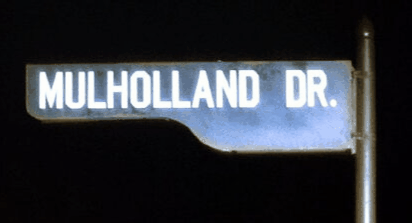iJADE Conference 2025 | Ecologies
Bristol Arnolfini, Saturday 8 November 2025 | 15:25 – 16:10 GMT

Crafting Magic > Conjuring Relations
Video, (27mins)
Slides repo URI https://era.ed.ac.uk/handle/1842/44148
Gitlab OER: https://gitlab.com/neil-mulholland/conjuring-relations-ijade
“Ecologic” in the context of art education is approached here as a complex metaphor that, at very least, blends “oikos”, “ology”, “art” and “education”. Distinct metaphorical blends offer a myriad of ways of interconnecting art, education, and their milieu. Metaphorical blends are forms of syntactical magic (spellcasting) that generate their own grammar (grimoire). Bio-cultural metaphors are thus agents of biophillic organisation – they conjure relations and situate actions. This raises two key questions:
Q. What sort of enabling constraints might different “eco” analogies conjure, and which actions do they situate?
Q. Are there “genuinely” ecological forms of identification and if so, which eco-metaphors might best rationalise them?
Looking at salient eco-metaphors – such as “shallow” and “deep” ecology, biophillia, (dis)enchantment, magical relations, technic, and panarchy – broaches how we can establish emergent boundary rationalisations, identifications and organisational forms through tricksterish blends of existing industrial and eco-metaphors.
References:
Holling, C. S., Allen, C. R., Angeler, D.G. Garmestani, A.S., and Gunderson, L.H., “Panarchy: Theory and Application.” Ecosystems (New York) 17, no. 4 (2014): 578–89.
Bateson, G. (1972). Steps to an Ecology of Mind: Collected Essays in Anthropology, Psychiatry, Evolution, and Epistemology. Chandler Publishing Company.
Barnett, N. Dad (2019-Present) ARG. See: https://www.imdb.com/title/tt11708910/?ref_=ttep_ov
Barnett, R. The Ecological University: A Feasible Utopia London: Routledge, 2017.
Boschung, D., and Bremmer. J.N., The Materiality of Magic. Morphomata; 20. Edited by Dietrich Boschung and Jan N. Bremmer. Paderborn: Wilhelm Fink, 2015.
Campagna, F. Technic and Magic: The Reconstruction of Reality. Bloomsbury Academic, 2018.
Capra, F. (1996) The Web of Life; Anchor Books: New York, NY, USA.
Capra, F. (2005). Speaking nature’s language: Principles for sustainability. In M. K. Stone & Z. Barlow (Eds.), Ecological literacy: Educating our children for a sustainable world (pp. 18–29). Sierra Book Club Books.
Cornelissen, J. P., Danoff C.J., Ricaurte, P., Pierce, C., and Macdonald, L.S. The Peeragogy Handbook. 3rd ed. Open access: http://peeragogy.org
Cornelissen, J. P., & Kafouros, M. I. (2008). The emergent organization: Primary and complex metaphors in theorizing about organization. Organization Studies, 29(7), 957–978.
De Cruz, Helen. Wonder and the Origins of Magic, Princeton University Press, 2024.
de Sousa Santos, B. “Beyond Abyssal Thinking: From Global Lines to Ecologies of Knowledges.” Review – Fernand Braudel Center for the Study of Economies, Historical Systems, and Civilizations 30, no. 1 (2007): 45–89.
Eversberg, D. and M. Schmelzer. 2018. ‘The degrowth spectrum: convergence and divergence within a diverse and conflictual alliance’. Environmental Values 27 (3): 245–267.
Fielder, N. and Konman, M. Nathan for You, Comedy Central, 2013-2017.
Gentner, Dedre, Bowdle, Brian F. Wolff, Phillip and Boronat, Consuelo. “Metaphor Is Like Analogy.” Chap. 6 In The Analogical Mind: Perspectives from Cognitive Science, edited by Dedre Gentner, Keith James Holyoak and Boicho N. Kokinov, 199–253. Cambridge, Mass: MIT Press, 2001.
Haeckel, E. (1866). Generelle Morphologie der Organismen. Allgemeine Grundzüge der organischen Formen-Wissenschaft, mechanisch begründet durch die von Charles Darwin reformierte Descendenz-Theorie. Reimer, Berlin.
Handl, S, and Schmid, H-J., Windows to the Mind : Metaphor, Metonymy and Conceptual Blending. Cognitive Linguistics Research, 48. 1st ed. Berlin;: De Gruyter Mouton.
Heft, H. “Behaviour Settings, Situated Action and Complexity Theory.” Philosophical transactions of the Royal Society of London. Series B. Biological sciences 379, no. 1910 (2024).
Hofstadter, D.R. “Epilogue: Analogy as the Core of Cognition.” In The Analogical Mind: Perspectives from Cognitive Science, edited by Gentner, D. Holyoak, K and Kokinov, B. 499–538. Cambridge, Mass: MIT Press, 2001.
Hofstadter, D.R., and Sander, E. Surfaces and Essences Analogy as the Fuel and Fire of Thinking. New York: Basic Books, 2013.
Holling, C.S. and Gunderson, L. Panarchy: Understanding Transformations in Human and Natural Systems, Island Press, 2001.
Jones, D. “‘The Biophilic University’: A De-Familiarizing Organizational Metaphor For ecological Sustainability?”. Journal of cleaner production 48 (2013): 148–65.
Jones, D. “The ‘Biophilic Organization’: An Integrative Metaphor for Corporate Sustainability.” Journal of business ethics 138, no. 3 (2016): 401–16.
LANDY, J and SALER, M. The Re-Enchantment of the World : Secular Magic in a Rational Age. Stanford, Calif. :: Stanford University Press, 2009.
Lupo, F and Cannell, S. The A-Team, Universal Television and Stephen J. Cannell Productions for NBC, 1983-1987.
Kaufmann, N., Sanders, C. and Wortmann, J. “Building New Foundations: The Future of Education from a Degrowth Perspective.” Sustainability science 14, no. 4 (2019): 931–41.
Kinchin, I. “The Ecological Root Metaphor for Higher Education: Searching for Evidence of Conceptual Emergence within University Education Strategies.” Education sciences12, no. 8 (2022a): 528
Kinchin, I. “Exploring Dynamic Processes within the Ecological University: A Focus on the Adaptive Cycle.” Oxford Review of Education 48, no. 5 (2022b): 675–92.
Latour, B, and Porter, C. We Have Never Been Modern. Cambridge: Harvard University Press, 1993.
Lakoff, G, and Johnson, M. Metaphors We Live By. ed. Chicago, University of Chicago Press, 2003.
McCarraher, E. The Enchantments of Mammon How Capitalism Became the Religion of Modernity. Cambridge: Harvard University Press, 2019.
Mauss, M. A General Theory of Magic. London: Routledge and K. Paul, 1972.
Moran, R. (1989). “Seeing and Believing: Metaphor, Image, and Force.” Critical Inquiry 16 (1): 87-112.
Mulholland, N. Re-Imagining the Art School: Paragogy and Artistic Learning. Creativity, Education and the Arts. London: Palgrave, 2019, 2019.
Næss, A. Økologi, samfunn og lifsstil (Ecology, Community, and Lifestyle), 1971.
Næss, A. “The Deep Ecology Movement,”, Deep Ecology for the Twenty-First Century, edited by G. Sessions, 64–84. New York, NY, USA: Shambhala, 1986.
Næss, A, “The Norwegian roots of deep ecology,” The Trumpeter, 21, no. 2 (2005), 38–41
Næss, A. Ecology of Wisdom. London: Penguin Classics, 2016.
Nonaka, I, and Takeuchi, H. The Knowledge-Creating Company : How Japanese Companies Create the Dynamics of Innovation. New York ; Oxford: Oxford University Press, 1995.
大野耐 (Ohno, T.) Toyota Production System: Beyond Large-Scale Production, Productivity Press, 1988
Prádanos L. (2016) The pedagogy of degrowth. Teaching Hispanic studies in the age of social inequality and ecological collapse. Journal of Hispanic Cultural Studies 19:153–168
Raja, V. Anderson, M. Calzavarini, F. and Viola, M. “Behavior Considered as an Enabling Constraint.” Studies in Brain and Mind, Cham: Springer International Publishing, 2021. 209–32.
Rappert, B. Performing Deception: Learning, Skill and the Art of Conjuring. Cambridge, UK: Open Book Publishers, 2022.
Randers, J. Meadows, D.H. Meadows, D.L. Behrens III, W. The Limits to Growth: A Report for the Club of Rome’s Project on the Predicament of Mankind. Club of Rome (New York, N.Y. USA: Universe Books, 1972). Dowload here: https://www.clubofrome.org/publication/the-limits-to-growth/
Roddy, S. and Filimowicz, M. “Creative Machine-Human Collaboration: Toward a Cybernetic Approach to Artificial Intelligence and Machine Learning Techniques in the Creative Arts.” 18–35. United Kingdom: Routledge, 2023.
Schmid, H. “Code, Desire and Conjuring: On the Magic Fabric of Contemporary Computing Technologies.” Img Journal 2, no. 3 (2020): 396–407.
Schoppek, D. “How Far Is Degrowth a Really Revolutionary Counter Movement to Neoliberalism?”. Environmental values 29, no. 2 (2020): 131–51.
Suchman, L. “Situated Actions.” In Human-Machine Reconfigurations : Plans and Situated Actions, 69–84. Cambridge: Cambridge University Press, 2006.
Walton, K. “Metaphor and Prop Oriented Make‐Believe.” European Journal of Philosophy (1993).
Westbrook, D.A. ‘Magical Contracts, Numinous Capitalism’ in Moeran, B and de Waal, T. editors. Magical Capitalism Enchantment, Spells, and Occult Practices in Contemporary Economies. ed. Cham: Springer International Publishing.
Wiener, N. Cybernetics or Control and Communication in the Animal and the Machine. New York: J. Wiley, 1948.
Woods, V. and Knuth, M.”The Biophilia Reactivity Hypothesis: Biophilia as a Temperament Trait, or More Precisely, a Domain Specific Attraction to Biodiversity.” Journal of bioeconomics 25, no. 3 (2023): 271–93.
Toncic, J. “I Dream of Siri: Magic and Female Voice Assistants.” Catalyst: Feminism, Theory, Technoscience 7, 2 (2021): 1–24.
Özkan, U. Şahín, S. and Şahín, S. “The Road to Ecological University: A Metaphor Analysis from the Perspectives of Academicians and External Stakeholders.” International journal of psychology and educational studies 9, no. 2 (2022): 427–39.





